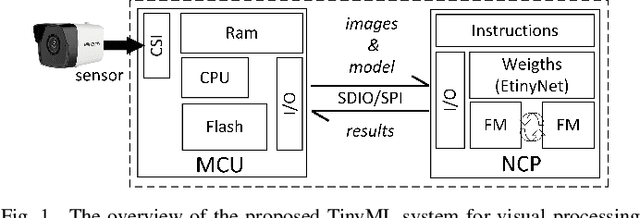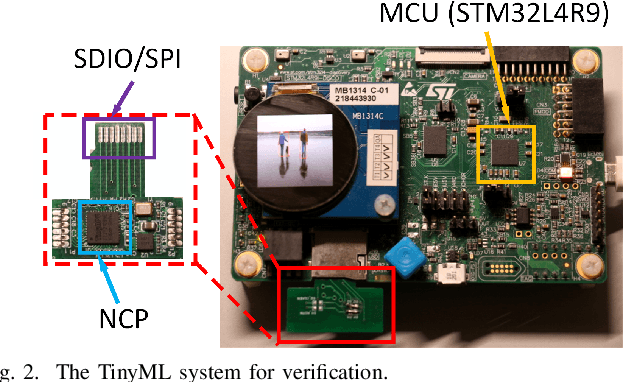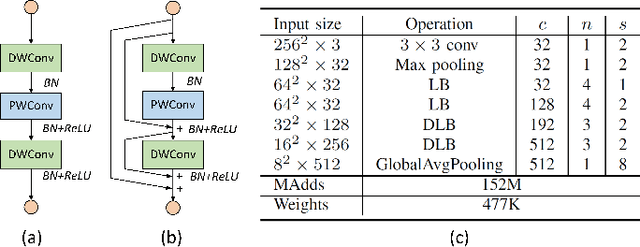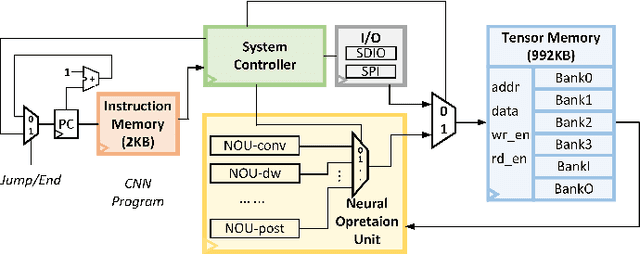Huawei Zhang
Aimee
KVSwap: Disk-aware KV Cache Offloading for Long-Context On-device Inference
Nov 14, 2025Abstract:Language models (LMs) underpin emerging mobile and embedded AI applications like meeting and video summarization and document analysis, which often require processing multiple long-context inputs. Running an LM locally on-device improves privacy, enables offline use, and reduces cost, but long-context inference quickly hits a \emph{memory capacity wall} as the key-value (KV) cache grows linearly with context length and batch size. We present KVSwap, a software framework to break this memory wall by offloading the KV cache to non-volatile secondary storage (disk). KVSwap leverages the observation that only a small, dynamically changing subset of KV entries is critical for generation. It stores the full cache on disk, uses a compact in-memory metadata to predict which entries to preload, overlaps computation with hardware-aware disk access, and orchestrates read patterns to match storage device characteristics. Our evaluation shows that across representative LMs and storage types, KVSwap delivers higher throughput under tight memory budgets while maintaining the generation quality when compared with existing KV cache offloading schemes.
A spherical harmonic-domain spatial audio signal enhancement method based on minimum variance distortionless response
Sep 05, 2024Abstract:Spatial audio signal enhancement aims to reduce interfering source contributions while preserving the desired sound field with its spatial cues intact. Existing methods generally rely on impractical assumptions (e.g. no reverberation or accurate estimations of impractical information) or have limited applicability. This paper presents a spherical harmonic (SH)-domain minimum variance distortionless response (MVDR)-based spatial signal enhancer using Relative Harmonic Coefficients (ReHCs) to extract clean SH coefficients from noisy ones in reverberant environments. A simulation study shows the proposed method achieves lower estimation error, higher speech-distortion-ratio (SDR), and comparable noise reduction (NR) within the sweet area in a reverberant environment, compared to a beamforming-and-projection method as the baseline.
Correcting for Interference in Experiments: A Case Study at Douyin
May 04, 2023



Abstract:Interference is a ubiquitous problem in experiments conducted on two-sided content marketplaces, such as Douyin (China's analog of TikTok). In many cases, creators are the natural unit of experimentation, but creators interfere with each other through competition for viewers' limited time and attention. "Naive" estimators currently used in practice simply ignore the interference, but in doing so incur bias on the order of the treatment effect. We formalize the problem of inference in such experiments as one of policy evaluation. Off-policy estimators, while unbiased, are impractically high variance. We introduce a novel Monte-Carlo estimator, based on "Differences-in-Qs" (DQ) techniques, which achieves bias that is second-order in the treatment effect, while remaining sample-efficient to estimate. On the theoretical side, our contribution is to develop a generalized theory of Taylor expansions for policy evaluation, which extends DQ theory to all major MDP formulations. On the practical side, we implement our estimator on Douyin's experimentation platform, and in the process develop DQ into a truly "plug-and-play" estimator for interference in real-world settings: one which provides robust, low-bias, low-variance treatment effect estimates; admits computationally cheap, asymptotically exact uncertainty quantification; and reduces MSE by 99\% compared to the best existing alternatives in our applications.
An Ultra-low Power TinyML System for Real-time Visual Processing at Edge
Jul 11, 2022



Abstract:Tiny machine learning (TinyML), executing AI workloads on resource and power strictly restricted systems, is an important and challenging topic. This brief firstly presents an extremely tiny backbone to construct high efficiency CNN models for various visual tasks. Then, a specially designed neural co-processor (NCP) is interconnected with MCU to build an ultra-low power TinyML system, which stores all features and weights on chip and completely removes both of latency and power consumption in off-chip memory access. Furthermore, an application specific instruction-set is further presented for realizing agile development and rapid deployment. Extensive experiments demonstrate that the proposed TinyML system based on our model, NCP and instruction set yields considerable accuracy and achieves a record ultra-low power of 160mW while implementing object detection and recognition at 30FPS. The demo video is available on \url{https://www.youtube.com/watch?v=mIZPxtJ-9EY}.
 Add to Chrome
Add to Chrome Add to Firefox
Add to Firefox Add to Edge
Add to Edge